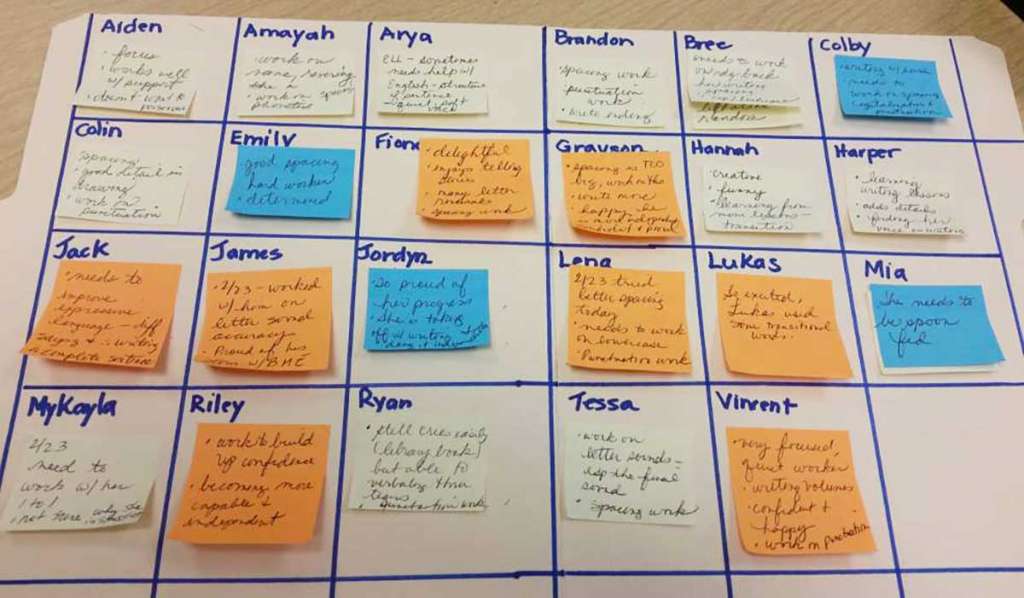BLOG
How Do I Navigate the Roundabout in Reading Recovery?
by Kim Reynolds
You know that feeling that you get in the pit of your stomach when things are uncomfortable or unpredictable? It is not a feeling that I get very often, but it happens as soon as I’m trying to enter one of those crazy roundabouts. Wikipedia defines a roundabout as “a type of circular intersection or junction in which road traffic is permitted to flow in one direction around a central island, and priority is typically given to traffic already in the junction.” As soon as I’m ready to enter the roundabout, I start to panic and feel pressure to move quickly. Hysterically, this is the same uneasiness that I experience when I teach behind the glass.
Last year, I was given the opportunity to bring a challenging student behind the glass to provide a learning experience for my peers at our teacher leader ongoing professional development at The Ohio State University. I reluctantly accepted the invitation, remembering during my Reading Recovery training that I will always need to be tentative, flexible, and willing to problem-solve and collaborate. So there I was — ready to enter the roundabout and starting to panic. Surprisingly, the results of the lesson led to an invitation to participate with Mary Fried in one of the 2019 preconference sessions at the National Reading Recovery and K-6 Literacy Conference. At the time, I wasn’t sure if it was a ‘what not to do’ or ‘try this, not that’ session. I pictured myself as the poster child. Fortunately, Mary didn’t agree with that mugshot image of myself. She wanted to focus on the problem-solving process that we use when we are working with a student who is challenging us. Her process included identifying the problem, issues, and weaknesses, and then seeking collaboration and more analysis. This is exactly what I needed. One of the quotes she referenced for this amazing process was from Charles Kettering: “A problem well stated is a problem half solved.”
The Reading Recovery student who I taught in that behind-the-glass lesson was an English learner who had made accelerated gains but had plateaued. The lesson was pleasant, but I knew that I needed to make a shift in my teaching to lift her learning. I had entered the roundabout and was circling, knowing that my teaching and my student were the priority. I needed to listen carefully to my peers’ feedback as we problem solved together and remember that I had accepted their invitation for my learning and teaching. Their recommendations led to the biggest shifts in my teaching during the following two days. I was able to tentatively exit the roundabout with a plan of action. My videos over those next few days, which Mary insisted that I do, were powerful and revealing! I had actually not stunted my student’s literacy growth but was ready and empowered to support her next steps.
Those next steps also lead to my participation in the 2019 Reading Recovery preconference session entitled “Problem Solving Together: Learning from Children Who Challenge Our Teaching.” I was thrilled to work with my Ohio State University trainers, Mary Fried and Dr. Lisa Pinkerton, and teacher leader Jennifer Layne from Marion. Apparently, Mary wanted to highlight my roundabout journey and those of my colleagues. We didn’t realize it, but we were headed into the largest roundabout that we had ever encountered. It wasn’t just a single lane, but multiple lanes, and Mary was going to guide us through it. We would be able to navigate those lanes together through our collaboration and problem solving.
My school’s conference room became our think tank. As I sat in that room, I remember asking myself “What the hell am I doing?” and “What on earth can I contribute?” Mary had a vision and she wasn’t going to let anything get in our way, even my own insecurities. As we began to discuss the students who challenged us, Mary patiently, eloquently, and brilliantly tied it all together into an amazing learning opportunity. She methodically led us to utilize Clay’s work and helped us—through her questions and guidance—to better understand our students’ challenges, often redirecting us in a charmingly negative way. Mary’s notetaking, time management, and eye and ear for detail is astounding and focused us on our endless learning, questioning, and revising of our own teaching.
At the end of each of our sessions, I was exhausted and exhilarated! I realized that I will always be a learner and should not be afraid of the challenges — those roundabouts. Nothing is impossible when we work collaboratively and tentatively. My great uncle’s college roommate, Dr. Norman Vincent Peale, said “Believe in yourself! Have faith in your abilities! Without a humble but reasonable confidence in your own powers you cannot be successful or happy.” Mary helped me to better understand this quote. I’m not afraid of those roundabouts anymore, not even the big ones.

Kim Reynolds is a Reading Recovery teacher leader in Dublin/Southwestern Schools, Dublin, Ohio.
THE JOURNAL OF READING RECOVERY
Spring 2025
OPEN ACCESS: Centering Children and Working Towards Equity: Teaching All Children to Read by Catherine Compton-Lilly
Literacy Leadership in Support of Equity: Whatever It Takes by Allison Briceño
Exploring the Purposes, Power, and Potential of Familiar Reading by Jamie Lipp
Full Circle: From Student to Psychologist by Joyce Romano




